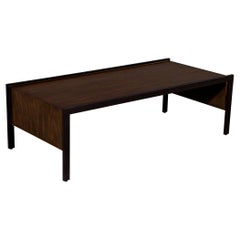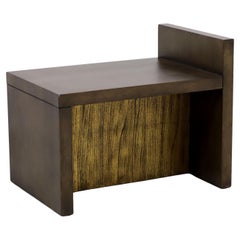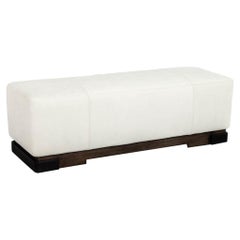Kara Mann
2010s American Modern Coffee and Cocktail Tables
Metal
Recent Sales
21st Century and Contemporary American Modern Benches
Walnut
2010s American Modern Ottomans and Poufs
Leather, Walnut
2010s American Modern Sofas
Metal
2010s American Modern Dining Room Chairs
Metal
2010s American Modern Dining Room Chairs
Metal
21st Century and Contemporary American Modern Benches
Walnut, Paint
21st Century and Contemporary American Modern Benches
Walnut
21st Century and Contemporary American Wall Lights and Sconces
Rock Crystal, Metal
Vintage 1950s Japanese Mid-Century Modern Chairs
Rope, Beech
People Also Browsed
2010s American Modern Stools
Brass
2010s European Mid-Century Modern Wall Lights and Sconces
Brass
Antique Late 19th Century Indian Agra Textiles
Linen, Silk, Sequins
Late 20th Century American Chinoiserie Console Tables
Bamboo, Wood, Lacquer
21st Century and Contemporary American Modern Chandeliers and Pendants
Plaster
2010s British Scandinavian Modern Ottomans and Poufs
Velvet, Mohair, Oak
2010s American Modern Screens and Room Dividers
Hardwood
Vintage 1960s British Victorian Dining Room Chairs
Brass
2010s American Organic Modern Side Tables
Wood, Walnut
2010s Rustic Coffee and Cocktail Tables
Wood, Teak, Reclaimed Wood
Vintage 1970s Italian Mid-Century Modern Beds and Bed Frames
Brass
2010s Canadian Modern Dining Room Tables
Macassar
Vintage 1930s French Art Deco Coffee and Cocktail Tables
Granite, Wrought Iron
21st Century and Contemporary Italian Organic Modern Chairs
Leather, Wood
Vintage 1930s Czech Art Deco Armchairs
Fabric, Wood
Mid-20th Century American Mid-Century Modern Side Chairs
Wicker
Baker Furniture Company for sale on 1stDibs
Owing to the company’s collaborations with many leading designers and artists over time, vintage Baker furniture is consistently sought after today. The heritage brand’s chairs, dining tables, desks and other pieces are widely known to collectors and design enthusiasts for their fine craftsmanship and durability.
Within a few decades of its launch, Baker Furniture Company evolved into one of the largest and most important furniture manufacturers in the United States and became known for its high-quality production standards. Siebe Baker and business partner Henry Cook founded the original iteration of Baker Furniture Company in 1890 in Allegan, Michigan, after immigrating to the United States from the Netherlands. Allegan is a small town west of Grand Rapids, which, at that time was home to Widdicomb Furniture Co. and more and was known as America’s furniture capital. The company manufactured doors and interior moldings and introduced a combination desk and bookcase in 1893. In the early 1900s, Siebe became the sole owner of the business.
Among others, stage designer Joseph Urban and modernist designer Kem Weber contributed designs to Baker in the 1920s. In 1932, under the leadership of Siebe’s son, Hollis, who started at the company as a salesman but took the reins when his father passed in 1925, Baker Furniture introduced bedroom pieces and debuted its Manor House collection, which made reproductions of European furnishings available to the American market. (Hollis was an avid traveler and procured antiques overseas for the company to reproduce in the United States.) Soon, Baker Furniture Company moved to Holland, Michigan, and eventually opened showrooms in Grand Rapids and elsewhere.
Pioneering Scandinavian designer Finn Juhl created a Danish modern line for Baker in 1951, and the company produced his award-winning Chieftain chair for a short time. In the late 1950s, Baker introduced the Milling Road label to reach a younger audience with stylish but less costly furnishings like console tables, walnut dining chairs and more, and in 1961, British furniture designer T.H. Robsjohn-Gibbings introduced a modern neoclassical line at Baker.
The 1960s and ’70s saw the introduction of historic reproduction furniture lines such as Woburn Abbey and the Historic Charleston collection, which remain very popular to this day. In 1990, Baker was licensed to produce a furniture line from Colonial Williamsburg. That same year, the Smithsonian Museum introduced Baker’s Chippendale chair into its permanent collection and the Grand Rapids Art Museum dedicated an exhibition to Baker’s 100th anniversary, a showcase that included 150 pieces of furniture Siebe Baker had collected as part of a larger assortment that had served as inspiration for his designs.
Today, vintage Baker furniture, such as its elegant mahogany nightstands and teak credenzas — particularly those crafted by Finn Juhl — sees high demand online and elsewhere. The company continues to produce contemporary collections with well-known designers such as Bill Sofield, Barbara Barry and Kara Mann and remains on par with some of the highest quality furniture in the industry.
Browse vintage Baker armchairs, sofas, coffee tables and other furniture on 1stDibs.
A Close Look at Modern Furniture
The late 19th and early 20th centuries saw sweeping social change and major scientific advances — both of which contributed to a new aesthetic: modernism. Rejecting the rigidity of Victorian artistic conventions, modernists sought a new means of expression. References to the natural world and ornate classical embellishments gave way to the sleek simplicity of the Machine Age. Architect Philip Johnson characterized the hallmarks of modernism as “machine-like simplicity, smoothness or surface [and] avoidance of ornament.”
Early practitioners of modernist design include the De Stijl (“The Style”) group, founded in the Netherlands in 1917, and the Bauhaus School, founded two years later in Germany.
Followers of both groups produced sleek, spare designs — many of which became icons of daily life in the 20th century. The modernists rejected both natural and historical references and relied primarily on industrial materials such as metal, glass, plywood, and, later, plastics. While Bauhaus principals Marcel Breuer and Ludwig Mies van der Rohe created furniture from mass-produced, chrome-plated steel, American visionaries like Charles and Ray Eames worked in materials as novel as molded plywood and fiberglass. Today, Breuer’s Wassily chair, Mies van der Rohe’s Barcelona chair — crafted with his romantic partner, designer Lilly Reich — and the Eames lounge chair are emblems of progressive design and vintage originals are prized cornerstones of collections.
It’s difficult to overstate the influence that modernism continues to wield over designers and architects — and equally difficult to overstate how revolutionary it was when it first appeared a century ago. But because modernist furniture designs are so simple, they can blend in seamlessly with just about any type of décor. Don’t overlook them.
Finding the Right Seating for You
With entire areas of our homes reserved for “sitting rooms,” the value of quality antique and vintage seating cannot be overstated.
Fortunately, the design of side chairs, armchairs and other lounge furniture — since what were, quite literally, the early perches of our ancestors — has evolved considerably.
Among the earliest standard seating furniture were stools. Egyptian stools, for example, designed for one person with no seat back, were x-shaped and typically folded to be tucked away. These rudimentary chairs informed the design of Greek and Roman stools, all of which were a long way from Sori Yanagi's Butterfly stool or Alvar Aalto's Stool 60. In the 18th century and earlier, seats with backs and armrests were largely reserved for high nobility.
The seating of today is more inclusive but the style and placement of chairs can still make a statement. Antique desk chairs and armchairs designed in the style of Louis XV, which eventually included painted furniture and were often made of rare woods, feature prominently curved legs as well as Chinese themes and varied ornaments. Much like the thrones of fairy tales and the regency, elegant lounges crafted in the Louis XV style convey wealth and prestige. In the kitchen, the dining chair placed at the head of the table is typically reserved for the head of the household or a revered guest.
Of course, with luxurious vintage or antique furnishings, every chair can seem like the best seat in the house. Whether your preference is stretching out on a plush sofa, such as the Serpentine, designed by Vladimir Kagan, or cozying up in a vintage wingback chair, there is likely to be a comfy classic or contemporary gem for you on 1stDibs.
With respect to the latest obsessions in design, cane seating has been cropping up everywhere, from sleek armchairs to lounge chairs, while bouclé fabric, a staple of modern furniture design, can be seen in mid-century modern, Scandinavian modern and Hollywood Regency furniture styles.
Admirers of the sophisticated craftsmanship and dark woods frequently associated with mid-century modern seating can find timeless furnishings in our expansive collection of lounge chairs, dining chairs and other items — whether they’re vintage editions or alluring official reproductions of iconic designs from the likes of Hans Wegner or from Charles and Ray Eames. Shop our inventory of Egg chairs, designed in 1958 by Arne Jacobsen, the Florence Knoll lounge chair and more.
No matter your style, the collection of unique chairs, sofas and other seating on 1stDibs is surely worthy of a standing ovation.


